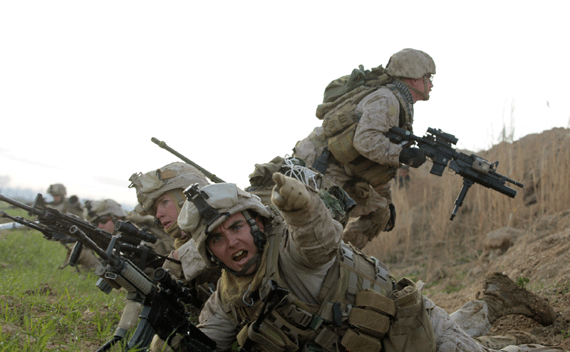What Are Obama’s Options on Afghanistan?
More on:

I have a new post up at CNN’s Global Public Square on President Obama’s choices in Afghanistan. You can read my take on the issue at CNN’s page or below.
If you want to delve deeper into the question of what U.S. Afghan policy should be, two pieces of recent testimony before the Senate Foreign Relations Committee are worth reading. One is by CFR’s president, Richard Haass. The other is by CFR’s Roger Hertog Senior Fellow for Defense Policy, Stephen Biddle. Richard doubts the wisdom of current U.S. policy and recommends greatly shrinking the size and objectives of the U.S commitment. Steve embraces the basic thrust of the administration’s counter-insurgency policy.
So, no, we are not of one mind here at CFR. Afghanistan policy is an instance in which smart, savvy, and reasonable people can disagree. That’s because at the end of the day the debate turns on tough judgments of what the future is likely to bring and how to value Afghanistan in the broader context of the demands on the U.S. government.
Anyway, on to Obama’s three options:
The killing of Osama bin Laden has energized the debate over U.S. strategy in Afghanistan. President Obama clearly has more political leeway in deciding his Afghan policy than he did before the daring strike in Abbottabad. The question is, what should he do with it?
Some U.S. troops will begin to leave Afghanistan this summer. That was the plan from the moment that Obama announced the Afghan surge back in December 2009. Just days ago, he said his drawdown orders “will be significant.”
But what does “significant” mean? The debate over Afghanistan essentially boils down to three questions: How many troops should come home? How fast should they leave? What should be the mission of those that remain behind?
Three different camps are giving Obama advice on how to answer these questions:
1. Stay-the-course with counterinsurgency: Proponents of the current strategy say it is working and that we need to keep at it to ensure that our successes stick. Bringing home 10,000-20,000 of the 100,000 U.S. troops currently in Afghanistan may be warranted. However, the mission should remain counter-insurgency focused - pushing back the Taliban, training the Afghan police and military and creating political space for the Afghan government to take root. Staying-the-course in this fashion will, in turn, strengthen Washington’s hand in dealing with other governments in the region.
2. Get a lot smaller, a lot quicker, and shift the mission to counter-terrorism: Proponents of revamping U.S. policy doubt that the successes the stay-the-course camp touts are real, or sustainable, or worth the cost. The get-smaller-quicker camp also sees perils in leaving Afghanistan abruptly. So they call for shrinking the U.S. commitment in Afghanistan and focusing it on counter-terrorism.
U.S forces, which might range in number from 15,000-30,000 troops, would train Afghan soldiers but their primary mission would be hunting down al Qaeda fighters. Meanwhile, U.S. diplomats would intensify their efforts to broker a peace between Kabul and Taliban leaders.
3. Declare victory and get out: The first two camps argue about how to refine the U.S. mission in Afghanistan. The third camp simply wants to end it. Their argument for coming home mixes principle and pragmatism.
Some like, Ron Paul, the GOP presidential candidate and congressman from Texas, are traditional non-interventionists (isolationists, if you prefer) who think the United States should mind its own business overseas. Others simply believe that America’s fiscal woes make the Afghan mission unaffordable, especially since a decade-long commitment has failed to produce a stable and effective government in Kabul.
The declare-victory-and-get-out camp will get a lot of press attention in the weeks to come. It certainly reflects the views of many Americans. A Pew Research Center poll released this week found that even after bin Laden’s death more Americans (49 percent) want to remove U.S. troops as soon as possible than to stay until the situation has stabilized (43 percent).
But that 49 percent of Americans won’t get their wish. The stay-the-course and the get-smaller-quicker camps disagree about what the United States needs to do in Afghanistan, but they agree that it needs to be there.
They will argue that a hasty withdrawal from Afghanistan will create chaos in the region and jeopardize everything that American troops have fought and died for over the past ten years.
So look for Obama to choose between staying-the-course and getting-smaller-quicker. And when he announces his decision, don’t look at just the number of troops he is ordering home. Look also at what he wants those staying behind to do. That will tell you all you need to know about the nature of America’s continued commitment in Afghanistan.
More on:
 Online Store
Online Store